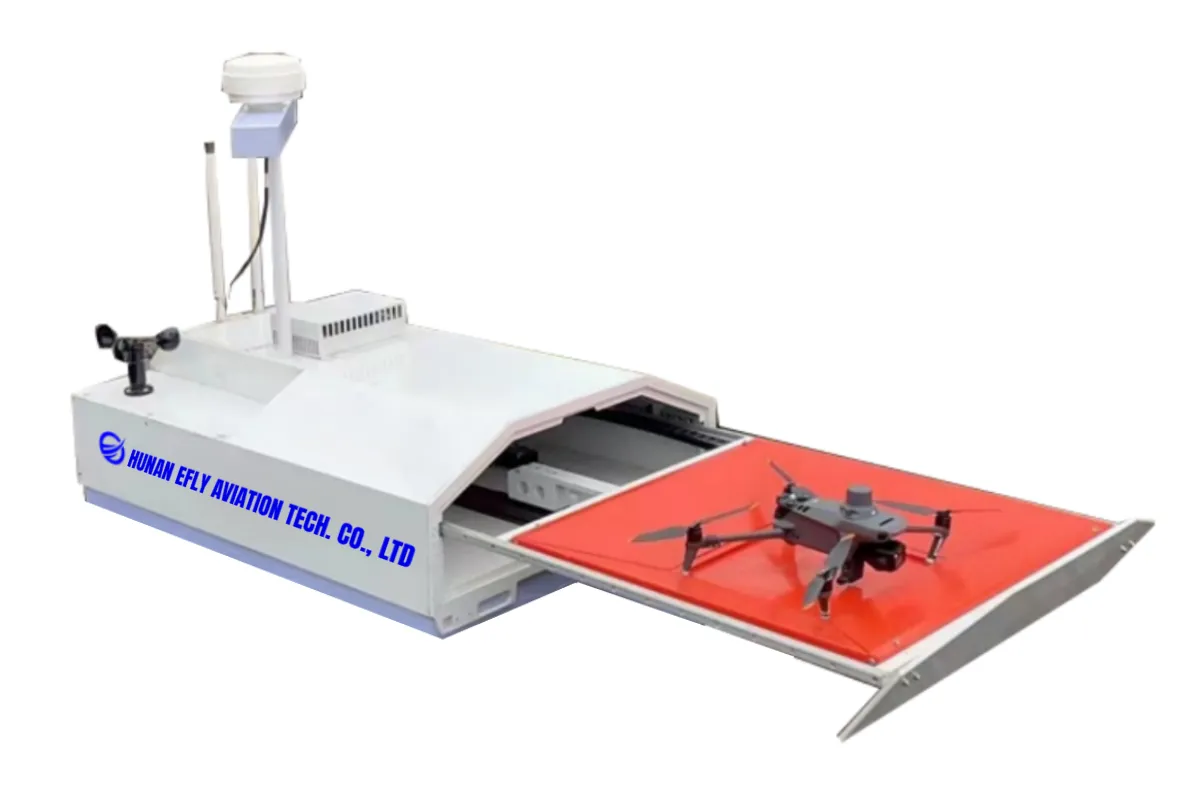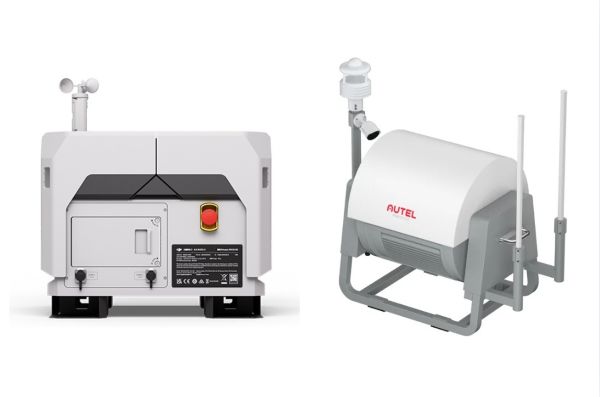I. EFLY Drone Hub Architecture: Redefining Industrial Standards
-
Military-Grade Reliability Design
- Built with aerospace-grade aluminum-titanium alloy. It passed 100,000 open-close cycle tests.
- In contrast, DJI uses engineering plastic; Autel uses standard metal.
- EFLY’s drone hub lasts much longer in extreme environments.
- Exclusive Dual-Mode Thermal Control System enables automatic cooling.
- It operates from -20°C to 55°C, breaking industry temperature limits.
-
Fully Independent System
- EFLY began hub R\&D in 2012 and power inspections in 2015.
- In 2021, it launched the UHV tower-mounted hub, still the only one in the industry.
- Eight generations of hubs have been released. DJI’s hub only entered inspection use in 2023.
-
EFLY is the only brand to support “Three-Zero” deployment:
- No infrastructure change
- No grid connection (supports optional solar power)
- No manual intervention
II. Scenario Penetration: Solving Real Industry Challenges
-
Ultra-High Voltage Power Inspections
- EFLY is the only brand to pass live-line ±800kV tests.
- Competitors support up to 500kV only.
- Equipped with drone anti-magnetic interference modules.
-
Energy Inspection Innovation
-
Solar Farms:
Hotspot detection algorithm with <2% false positive rate
AI module for detecting microcracks in panels -
Oil & Gas Pipelines:
- Millimeter-level detection of anti-corrosion layer thickness
- First in the industry to achieve this
-
III. Cost Perspective: Hidden Value
-
Indirect Benefits
- Reduces risk of manual tower climbs.
- Accident rates in the power sector dropped by 91%.
- Builds a defect database that auto-generates maintenance work orders.
- In 10 years of inspections, no crash incidents recorded.
- Electromagnetic shielding reduces crash rate by 87%.
- The hub is lightweight—can be carried by two people and deployed by three.
IV. Ecosystem Advantage: A Moat Competitors Can’t Cross
-
Deep Integration with Industrial Protocols
- Multi-hub clusters controlled via a central platform.
- Enables one-screen control and cross-region scheduling of 100+ drones.
- Reduces labor costs by 90%.
- Direct integration with Grid PMS 2.0 and Oil & Gas SCADA (custom development required).
- Supports API/SDK for third-party extension.
-
Vertical Industry Know-How
- Comes with 21 inspection templates for various industries.
- Includes models like wind turbine bolt looseness.
- AI algorithms co-developed with China’s top five energy corporations.

V. Technical Specs & Deployment Advantages
| Index | EFLY Drone Hub | DJI Dock | Autel Hub |
|---|---|---|---|
| Drone Compatibility | Multiple brands | DJI only | Autel only |
| Cloud Platform | Multi-user | Single ID | Custom build |
| Protection Level | IP56 | IP43 | IP44 |
| Deployment Time | ≤2 hours | ≥6 hours | ≥4 hours |
| Working Temp. | -20°C to 55°C | 0°C to 40°C | -10°C to 50°C |
Deployment Requirements:
| Category | EFLY | DJI | Autel |
|---|---|---|---|
| Deployment Requirements | Flexible: no ground-level or 2–3m towers Modular design, quick setup |
Complex installation Requires professional team |
Complex installation Requires professional team |
| Cloud & AI Features | Multi-user cloud Autonomous routing Defect detection Centralized control |
Requires FlightHub 2.0 | Basic features only |
| Support | 24/7 tech support 48-hour on-site service in China |
No dedicated support | Pay-per-use support only |

VI. All-Environment Readiness & Real-World Results
-
Extreme Environment Adaptability
- Can be placed in pickup trucks as mobile drone hubs.
- Supports solar panels, energy storage, and 220V AC.
- IP56-rated for harsh or coastal environments.
-
Proven Field Cases
- 10-year inspection record without failure.
- Covers power, oil & gas, and mining industries etc.
- Used by provincial subsidiaries of State Grid Corporation of China:
With 100+ deployed hub systems, annual inspection mileage exceeded 80,000 km.
Anomaly response time dropped from 48 hours to 1.5 hours.
Maintenance costs reduced by 67%.
Conclusion
EFLY Drone Hub sets a new benchmark for industrial drone infrastructure. It combines military-grade materials, industrial-grade AI, and scenario-based design. Its advantages show in high-risk scene performance, real autonomy, and long-term ROI.
